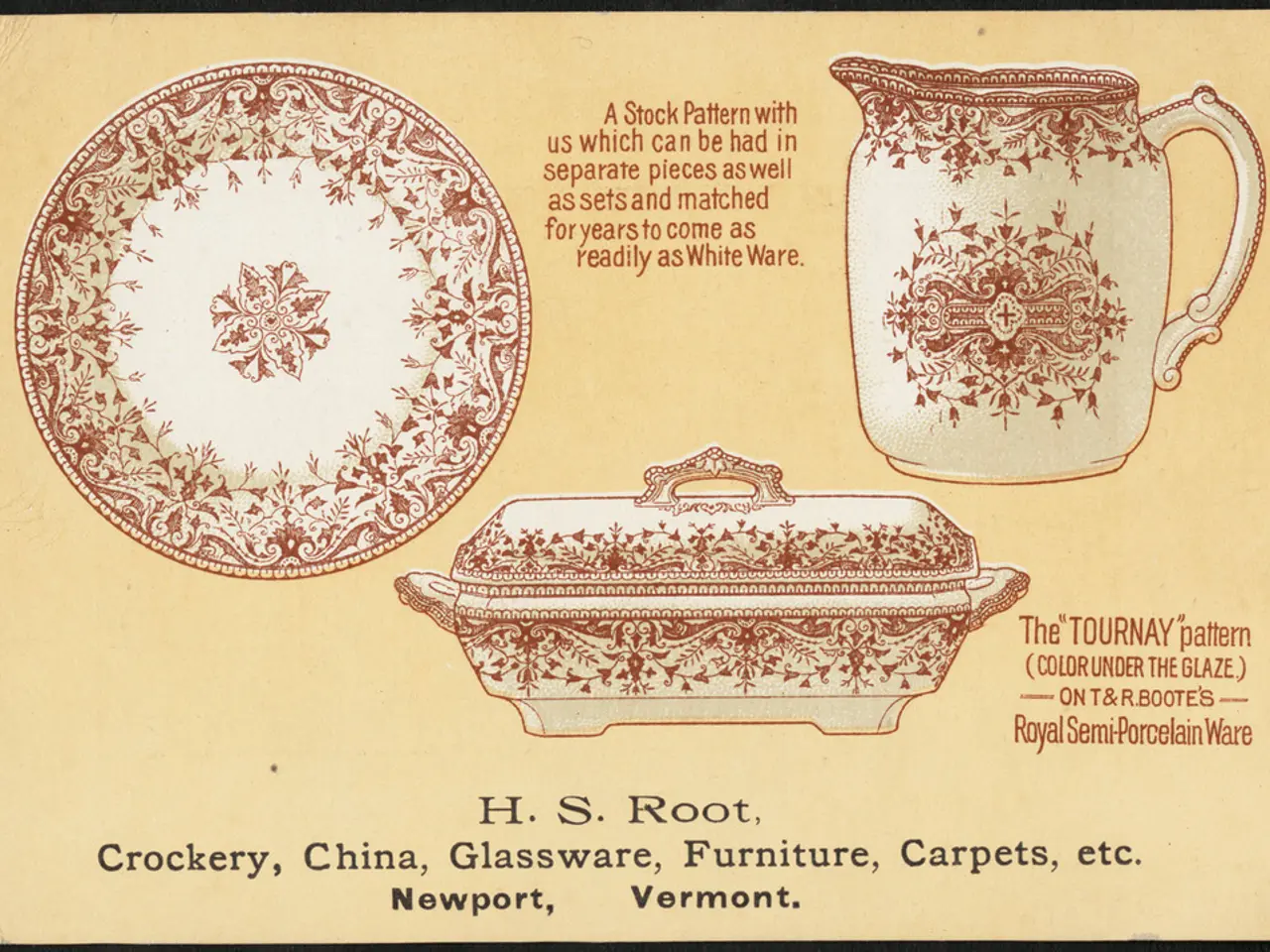Decline in Artisanal Pottery: Investigation into the Vanishing UK Pottery Scene
Handmade Pottery Business Navigates Growth and Challenges Amidst Market Renewal
The handmade pottery industry is experiencing a period of steady growth and renewed consumer interest, driven by a rising demand for unique, artisanal, and sustainable home décor items. This growth coexists with notable challenges posed by global economic factors, competition from mass-produced ceramics, and evolving digital marketing dynamics.
Current State
The pottery and ceramics market was valued at USD 11.5 billion in 2024 and is projected to grow to USD 16.2 billion by 2032, with a compound annual growth rate (CAGR) of 4.38%. This robust opportunity space is fueled by consumer preferences for handcrafted, rustic, and bespoke ceramics, particularly in North America and Europe.
Search interest in "handmade pottery" peaked in October 2024, affirming lasting consumer engagement. Handmade pottery commands attention due to its uniqueness and ability to convey a personal story, traits less present in mass-produced items. Custom ceramic vases and tableware that embody imperfection and organic aesthetics, such as the Wabi-Sabi style, are particularly favored.
However, the industry faces challenges. Traditional pottery production, especially firing in kilns, is energy-intensive and costly, posing barriers to scaling and compliance with strict environmental regulations. Smaller producers may struggle to afford energy-efficient kiln technology. Mass-produced ceramics dominate on price and availability, creating pressure on handmade potters to differentiate via quality, design, and storytelling. For ceramics sold online, packaging durability and size variations remain pain points impacting consumer satisfaction.
Future Outlook
Sustainability and eco-consciousness will continue to be key growth drivers as consumers seek environmentally friendly and handcrafted goods. Energy-efficient production methods and cleaner kiln technologies could be crucial for the industry’s scalable growth.
The rise of online retail presents strong opportunities with customization options and direct consumer engagement. However, improving product descriptions, imagery, and packaging resilience will be necessary to convert interest into sales. Technological innovation, such as integrating smart ceramics and exploring new design aesthetics aligned with contemporary tastes, offer avenues for innovation and market differentiation.
Artisanal pottery is expected to thrive particularly in premium and boutique segments where consumers are willing to pay more for exclusivity and handcrafted appeal.
Summary Table
| Aspect | Current State | Future Outlook | |-----------------------------------|-------------------------------------|------------------------------------------| | Market Size & Growth | $11.5B (2024), CAGR ~4.4% to 2032 | Projected steady growth, $16.2B by 2032 | | Consumer Demand | Strong for unique, artisanal pieces | Growth driven by eco-consciousness & lifestyle trends | | Production Challenges | High energy use, environmental limits | Push for efficient, cleaner kilns and regulations compliance | | Competition | Mass-produced ceramics dominate pricing | Handmade gains edge via story, customization, quality | | Digital Marketing & Sales | Online retail growing; packaging and product satisfaction challenges | Enhanced customization, better online presentation, improved packaging | | Design Trends | Rustic, Wabi-Sabi, minimalist styles | Smart ceramics, seasonal collections, bespoke pieces |
The handmade pottery industry is positioned to expand by leveraging its artisanal image, sustainability appeal, and digital engagement, while addressing production energy costs and facing competitive pressures from mass production. High energy costs were a major factor in the closure of several well-known pottery businesses, including Moorcroft Pottery and Royal Stafford, in 2025.
Despite these challenges, the handmade pottery business can thrive with strategic adaptations. The business owner is focusing on improving digital presence to attract customers, moving sales from Etsy to their own website to save on fees, and investing in a bat system from Hartley & Noble to speed up production. The business owner is also considering ways to improve efficiency in production and create unique work to stay competitive.
However, the business owner acknowledges the impact of external factors such as consumer confidence and economic conditions. According to Heritage Crafts, handmade pottery isn't in danger and is in better shape than some other crafts like arrowsmithing, wainwrighting, or currach making. The handmade pottery business faced challenges starting in 2020 due to the COVID-19 lockdown and surge in online shopping. The business owner attributes quiet times to factors like bad product photos, unprofessional descriptions, and 'algorithms', but has realized there are many things beyond his control such as people's buying power and costs.
- The continued growth of the handmade pottery industry is fueled not only by consumer preferences for unique, artisanal pieces but also by the rise in eco-consciousness and lifestyle trends.
- A focus on sustainability and energy-efficient production methods could play a crucial role in the industry's scalable growth, while addressing high energy costs poses a significant challenge for smaller producers.
- In the face of competition from mass-produced ceramics, handmade potters can differentiate themselves via quality, design, and compelling narratives, while improving online presentation and packaging resilience is critical for converting interest into sales.
- The business owner is adapting to the industry's challenges by improving digital presence and production efficiency, exploring innovative design trends like smart ceramics, and focusing on creating unique work to maintain competitiveness, acknowledging the impact of external factors like consumer confidence and economic conditions.





